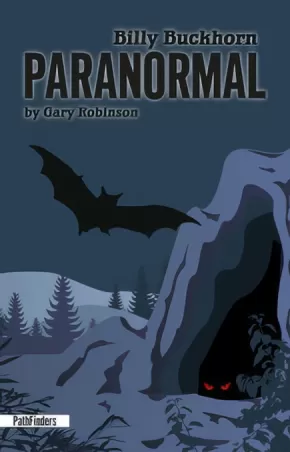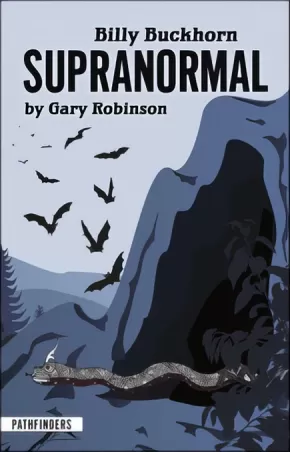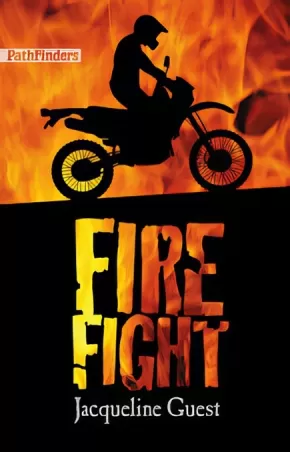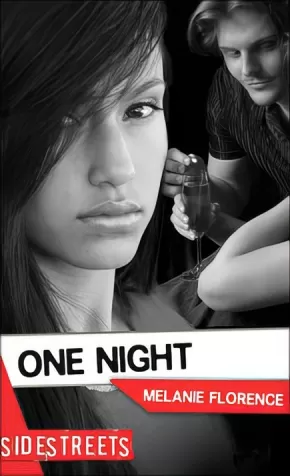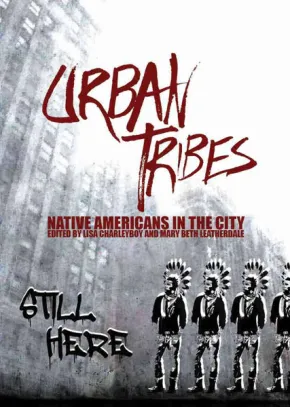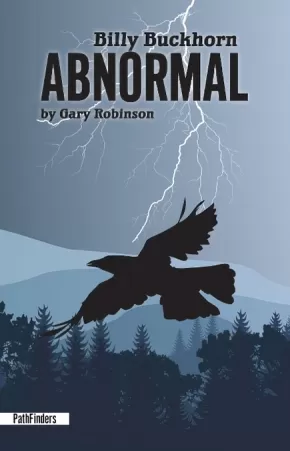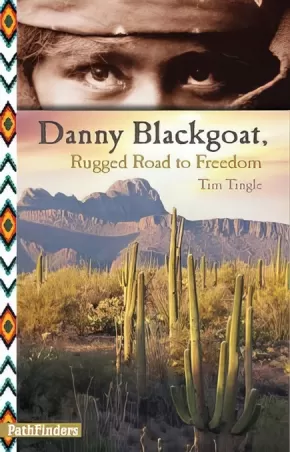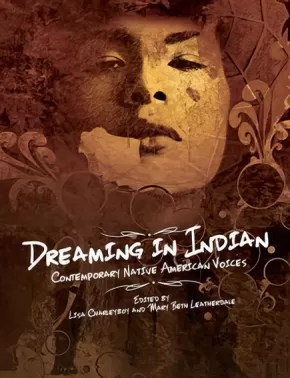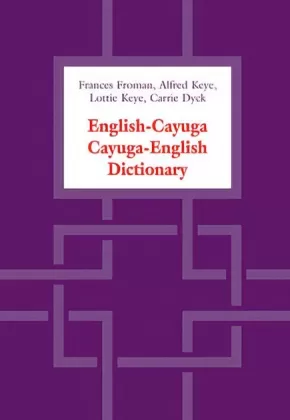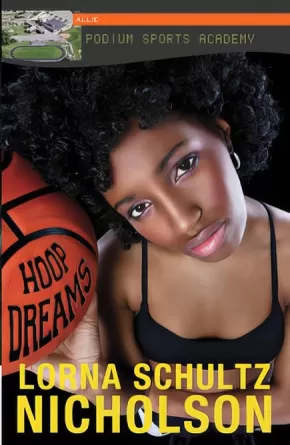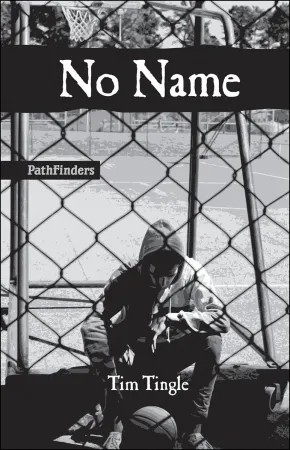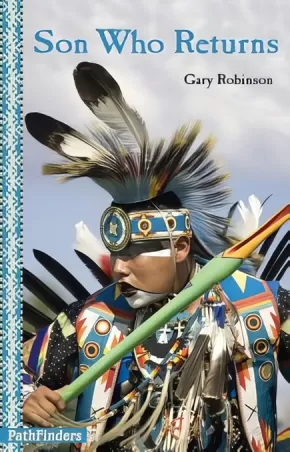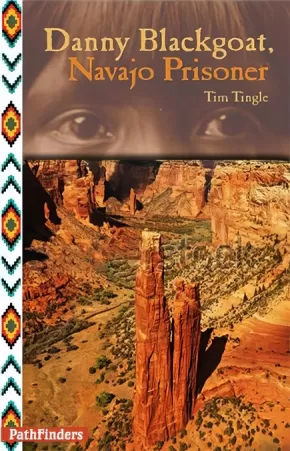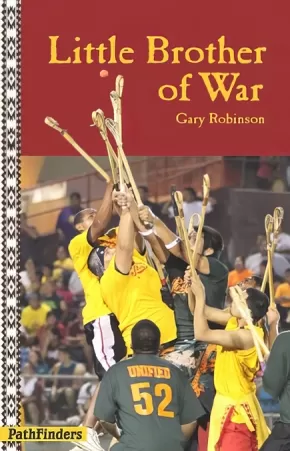
Reading
46
-
60
of
90 Results;
Sort By
Go To
of 6
Billy Buckhorn: Paranormal
$12.95
Text Content Territories:
Indigenous American; Native American; Cherokee;
ISBN / Barcode: 9781939053084
Synopsis:
Synopsis:
In this second installment in the series, Billy and his friend Chigger continue their adventures in a hidden cave. After a horrifying accident at the cave, Billy is pronounced clinically dead on an operating table. After being revived, he discovers an ability to see and speak with the spirits of the dead including his deceased Cherokee grandmother. When Chigger becomes possessed by an alien creature, Billy knows he must return to the cave to save his friend. What he doesn’t know is that the Horned Serpent known to the Cherokees as Uktena is lying in wait.
Educator & Series Information
Ages: 12 to 16 / Reading level: 4.5
This novel is part of the Billy Buckhorn series, which is part of the PathFinder series. The PathFinders series of Hi-Lo (high interest, low readability) novels offers the following features:
• Indigenous teen protagonists
• Age appropriate plots
• 2.5 – 4.5 Reading Level
• Contemporary and historical fiction
• Indigenous authors
The PathFinders series is from an American publisher. Therefore, Indigenous terminology in the PathFinders books is not the same as Canadian Indigenous terminology. This prompts a useful teaching moment for educators in discussing appropriate terminology use in Canada. The recommended ages for books in the PathFinders series are 12-16.
Additional Information
120 pages | 4.50" x 7.00"
Billy Buckhorn: Supranormal
$12.95
Format:
Paperback
Text Content Territories:
Indigenous American; Native American; Cherokee;
ISBN / Barcode: 9781939053121
Synopsis:
Synopsis:
Billy Buckhorn's uncanny intuition became apparent at an early age. In the course of this exciting series, Billy's supernatural abilities grow and develop, and his reputation as a gifted "holy man" in the Old Way spreads throughout the Cherokee Nation. In book 3, Supranormal, Billy and his grandfather Wesley face a deadly, ancient beast that's poised to take control of the world. While Wesley and Billy summon aid from the spirit realms, Billy's father, a college professor, puts together an archaeological team to help out - and to document the unprecedented things they've seen and experienced. But even with everyone pulling together, can they stop Uktena?
Series Information
This novel is part of the Billy Buckhorn series, which is part of the PathFinder series. The PathFinders series of Hi-Lo (high interest, low readability) novels offers the following features:
• Indigenous teen protagonists
• Age appropriate plots
• 2.5 – 4.5 Reading Level
• Contemporary and historical fiction
• Indigenous authors
The PathFinders series is from an American publisher. Therefore, Indigenous terminology in the PathFinders books is not the same as Canadian Indigenous terminology. This prompts a useful teaching moment for educators in discussing appropriate terminology use in Canada. The recommended ages for books in the PathFinders series are 12-16.
Additional Information
128 pages | 4.50" x 7.00"
Fire Fight
$12.95
Format:
Paperback
Text Content Territories:
Indigenous American; Native American; Navajo (Diné); Indigenous Canadian; First Nations; Stoney-Nakoda (Nakota);
ISBN / Barcode: 9781939053114
Synopsis:
Synopsis:
After her ikusin (grandmother) dies, Kai Hunter, a part-Navajo, part-Stoney Nakoda 16-year-old, runs away to Banff, Alberta, to avoid being placed in a foster home. Kai lies her way into a new identity, a job, and a safe place to live. She makes new friends and volunteers with a rapid attack crew for the forestry service. She even meets a great guy named Rory, who's into motorcycles, just like her - and who seems to be into her, too. But Kai is scared of being found out, and she isn't sure that she can trust all of her new friends...or that she likes the person she's pretending to be. Meanwhile, she's got to pay rent, figure out whether Rory is boyfriend material, and assist the rap-attack crew as they face a string of suspicious forest fires. In the thrilling conclusion to this romantic adventure, Kai's choices become matters of life and death.
Educator & Series Information
This book is part of the PathFinders series.
R.L. 3.5
Recommended for ages 12 to 16.
Additional Information
128 pages | 4.53" x 7.00"
One Night
$9.95
Format:
Paperback
Text Content Territories:
Indigenous Canadian;
ISBN / Barcode: 9781459409835
Synopsis:
Synopsis:
Luna Begay is as studious and serious about her Aboriginal heritage as her sister, Issy, is outgoing and fun. When Issy convinces Luna to go with her to a party full of rich kids, Luna is surprised to end up talking with Jon, who is charming, sophisticated, and very good-looking. But the night turns bad when Jon drugs and rapes Luna.
Feeling guilty and ashamed that she will be perceived as an "Indian slut," Luna doesn't tell anyone and remains in denial until Issy figures out that Luna is pregnant. Knowing that her decisions will affect her parents and Issy as much as her own future, Luna has to work out how to deal with the consequences of that one night, and she has to do it fast.
Reviews
"A hi-lo title that reads like a Lifetime made-for-TV movie. An adequate choice for struggling readers."— Tamara Saarinen, School Library Journal
"Melanie Florence's young adult novel One Night is a powerful read for all readers. Written for reluctant readers it will be read by readers at all levels... The author explores many issues — sexual abuse, bullying, teenage pregnancy, adoption, and rape. Melanie Florence's well-written and compassionate novel does not disappoint." — Keep Calm and Novel On, Educator and NetGalley Reviewer
"I adore Luna... She never begins to act out of character but she does grow throughout the novel ... Parents and other adults [are exactly as I would expect them to be. Realistically portrayed, they are at first shocked, then incredibly supportive of Luna. Her principal and teachers are understanding and concerned with her safety. I heaved a sigh of relief at this portrayal. I work at a public high school ... and I absolutely KNOW this is how it goes down there rather than the usual judgmental way portrayed in novels. (Although the students on the other hand can be brutal - also written in the novel.) Luna's parents were so fantastic. Concern for their daughter, getting her immediate medical care, discussing realistic options for after the baby is born, and supporting Luna the whole way are exactly how a parent SHOULD react. Writing adults as they are here could encourage girls to come forward about rape or pregnancy. THANK YOU MELANIE FLORENCE! ... The inclusion of so many contemporary issues (alcoholism, stereotyping, negative branding, rape, drinking, abortion, adoption, being roofied) makes it interesting and thought-provoking the whole way through." — Mandy Peterson, Librarian
"This book deals with some serious topics that are timely and are issues teens are facing. One Night touches on aspects of racism, stereotyping, bullying, drugs, rape, and Aboriginal heritage. It would be well-paired with some recent news articles or other non-fiction pieces on any of these topics."— Chasity Findlay,, CM Magazine
Educator & Series Information
This book is part of the SideStreets series. SideStreets are edgy, fast-paced novels that combine real-world themes and believable characters to make for short, heart-stopping books — sure to engage the most reluctant reader.
Interest age: From 14 To 18
Fry Reading Level [grade]: 2.9
Lexile Reading Level: HL560L
Additional Information
192 pages | 4.25" x 7.00"
Urban Tribes: Native Americans in the City
$14.95
Editors:
Format:
Paperback
Text Content Territories:
Indigenous Canadian; Indigenous American;
ISBN / Barcode: 9781554517503
Synopsis:
Synopsis:
The majority of Natives in North America live "off the rez." How do they stay rooted to their culture? How do they connect with their community?
Urban Tribes offers unique insight into this growing and often misperceived group. This anthology profiles young urban Natives and how they connect with Native culture and values in their contemporary lives.
Their stories are as diverse as they are. From a young Dene woman pursuing an MBA at Stanford University to a Pima photographer in Phoenix to a Mohawk actress in New York City, these urban Natives share their unique insight to bridge the divide between their past and their future, their cultural home, and their adopted cities.
Unflinchingly honest and deeply moving, the contributors explore a wide range of topics: from the trials and tribulations of dating in the city to the alienating experience of leaving a remote reserve to attend high school in the city, from the mainstream success of the Electric Pow Wow music genre to the humiliation of racist school mascots.
Each of the personal perspectives helps to illuminate larger political issues. An innovative and highly visual design offers a dynamic reading experience.
Educator Information
Recommended Ages: 11 - 18.
Recommended Authentic First Peoples resource.
Recommended English First Peoples resource.
Additional Information
136 pages | 6.75" x 9.50" | colour illustrations and photographs, foreward, introduction, bibliography
Wisdom from our First Nations
$10.95
Format:
Paperback
Text Content Territories:
Indigenous American; Indigenous Canadian;
ISBN / Barcode: 9781927583555
Synopsis:
Synopsis:
In Indigenous cultures, elders serve as a bridge across time: they are connected to the past, they live in the present and they offer wisdom for the future. In these fascinating biographical essays, twelve First Nation and Native American elders share stories from their lives and tell what it was like to live in a time before television, cell phones and video games. Their stories explain how their humble childhoods shaped the adults they became and the lessons they share as elders. All the elders profiled work to ensure that their Native culture is passed down to members of their tribe. Settle in with this book and “listen” to the stories of these elders’ lives. As you take in their history, you just might gain wisdom that could make a difference in your own life.
Educator & Series Information
This book is part of the First Nations Series for Young Readers. Each book is a collection of biographies of First Nations, Métis, and Inuit women and men who are leaders in their fields of work, in their art, and in their communities.
For ages 9-14.
Additional Information
128 pages | 6.00" x 9.00"
Billy Buckhorn: Abnormal
$12.95
Format:
Paperback
Text Content Territories:
Indigenous American; Native American; Cherokee;
ISBN / Barcode: 9781939053077
Synopsis:
Synopsis:
Book one of the Billy Buckhorn series introduces a Cherokee teen who uses his supernatural abilities to solve mysteries. In Abnormal, Billy is struck by lightning while fishing with his friend Chigger. He survives the lightning strike but begins to experience an enhanced level of ESP. Billy is labeled "abnormal" by one of his teachers after he uncovers an unsavory secret from the teacher's past. What no one suspects is the teacher is a shape-shifter who becomes a raven that gains strength from his victims' fear. When Billy confronts the teacher, he must channel his own fear into anger in order to defeat the evil raven.
Educator & Series Information
This novel is part of the Billy Buckhorn series, which is part of the PathFinder series. The PathFinders series of Hi-Lo (high interest, low readability) novels offers the following features:
• Indigenous teen protagonists
• Age appropriate plots
• 2.5 – 4.5 Reading Level
• Contemporary and historical fiction
• Indigenous authors
The PathFinders series is from an American publisher. Therefore, Indigenous terminology in the PathFinders books is not the same as Canadian Indigenous terminology. This prompts a useful teaching moment for educators in discussing appropriate terminology use in Canada. The recommended ages for books in the PathFinders series are 12-16.
Additional Information
172 pages | 4.50" x 7.00"
Danny Blackgoat: Rugged Road to Freedom
$12.95
Format:
Paperback
Text Content Territories:
Indigenous American; Native American; Navajo (Diné);
ISBN / Barcode: 9781939053053
Synopsis:
Synopsis:
This second volume of a three-part series continues the dramatic story of Danny Blackgoat, a Navajo teenager who, after being labeled a troublemaker, is taken prisoner during the Long Walk of 1864. Danny escaped from Fort Davis in volume one (Danny Blackgoat, Navajo Prisoner), but he must still face many obstacles in order to rescue his family and find freedom.
Whether it’s soldiers and bandits chasing him or the dangers of the harsh desert climate, Danny ricochets from one bad situation to the next,but his bravery doesn’t falter and he never loses faith.
Educator & Series Information
Like all PathFinders novels for reluctant teen readers, this contemporary story is by a Native American author, features a linear plot, and is written at a 4.0 to 4.5 reading level.
This is the second book in the Danny Blackgoat series, which is part of the PathFinders series. The PathFinders series of Hi-Lo (high interest, low readability) novels offers the following features:
• Indigenous teen protagonists
• Age appropriate plots
• 2.5 – 4.5 Reading Level
• Contemporary and historical fiction
• Indigenous authors
The PathFinders series is from an American publisher. Therefore, Indigenous terminology in the PathFinders books is not the same as Canadian Indigenous terminology. This prompts a useful teaching moment for educators in discussing appropriate terminology use in Canada. The recommended ages for books in the PathFinders series are 12-16.
Additional Information
144 pages | 4.50" x 7.00"
Dreaming in Indian: Contemporary Native American Voices
$19.95
Artists:
Editors:
Format:
Hardcover
Text Content Territories:
Indigenous American; Indigenous Canadian;
ISBN / Barcode: 9781554516872
Synopsis:
Synopsis:
A powerful and visually stunning anthology from some of the most groundbreaking Native artists working in North America today.
Truly universal in its themes, Dreaming In Indian will shatter commonly held stereotypes and challenge readers to rethink their own place in the world. Divided into four sections, ‘Roots,’ ‘Battles,’ ‘Medicines,’ and ‘Dreamcatchers,’ this book offers readers a unique insight into a community often misunderstood and misrepresented by the mainstream media.
Emerging and established Native artists, including acclaimed author Joseph Boyden, renowned visual artist Bunky Echo Hawk, and stand-up comedian Ryan McMahon, contribute thoughtful and heartfelt pieces on their experiences growing up Indigenous, expressing them through such mediums as art, food, the written word, sport, dance, and fashion. Renowned chef Aaron Bear Robe, for example, explains how he introduces restaurant customers to his culture by reinventing traditional dishes. And in a dramatic photo spread, model Ashley Callingbull and photographer Thosh Collins reappropriate the trend of wearing ‘Native’ clothing.
Whether addressing the effects of residential schools, calling out bullies through personal manifestos, or simply citing hopes for the future, Dreaming In Indian refuses to shy away from difficult topics. Insightful, thought-provoking, and beautifully honest, this book will to appeal to young adult readers. An innovative and captivating design enhances each contribution and makes for a truly unique reading experience.
Reviews
“It’s hard to imagine a middle- or high-school classroom that wouldn’t benefit from having this.” —Booklist, 02/15
“Belongs in every middle school, high school and public library.” —CM Reviews, 05/22/15
"For some time now, I've been waiting for Dreaming in Indian: Contemporary Native American Voices... It was getting buzz in Native networks on social media. I've read it, now, and highly recommend it... Dreaming in Indian has a vibrancy I've not seen in anything else. A vibrancy that, perhaps, is characteristic of a generation at ease with technology and its tools... I want to pore over the art, studying it, thinking about it, marveling at it. I can imagine a lot of people dismissing this work because it doesn't conform to their stereotypical ideas of dead or stoic Indians. But I can also imagine a lot of others holding it dear because it reflects who we are... You'll also have a solid introduction to the artists and writers, their lives, what drives them... Gritty and real, their live stories are inspiring... There's a lot to ponder in Dreaming In Indian. It'll challenge readers, in good ways, and that is a good thing. Check it out." — Debbie Reese, American Indians in Children's Literature, September 2014
Educator Information
Recommended Ages: 11-18
Themes: First Nations; native peoples; Indigenous; biography; multicultural; stereotyping; acceptance; community; prejudice; self-esteem; tolerance.
Fountas & Pinnell Reading Level: Z+
Authentic First Peoples resource K-9.
Recommended English First Peoples resource.
Additional Information
128 pages | 8.50" x 11.00" | full-color illustrations and photographs throughout, foreword, introduction
English-Cayuga/Cayuga-English Dictionary
$81.00
Format:
Paperback
Text Content Territories:
Indigenous Canadian; First Nations; Haudenosaunee (Iroquois); Cayuga;
Reading Level: N/A
ISBN / Barcode: 9781442627093
Synopsis:
Synopsis:
The first comprehensive lexicographic work on Cayuga, an Iroquoian language spoken in southern Ontario at Six Nations of the Grand River, this dictionary, combines the work of Dyck, a professor of linguistics, and Froman, Keye, and Keye, all Cayuga language teachers at Six Nations. It contains over 3000 entries, including 1000 verb forms and many nouns never before printed; extensive cross-referencing, thematic appendices that highlight cultural references and provide 1600 further entries, and a short grammatical sketch complete this accomplished work.
Entries in the main dictionary are organized by bases, which will make the dictionary especially helpful to those learning Cayuga as a second language. The dictionary's accuracy and extensiveness will make it an indispensable reference not only to the Cayuga speaker and student, but also to other Iroquoian speakers, linguists, anthropologists, and historians of Indigenous Peoples.
Produced under the auspices of the Sweetgrass First Nations Language Council Inc.
Reviews
"The first extensive dictionary of Cayuga, this benchmark work documents the language in 3,000 entries and in word lists organized thematically in appendixes ... A valuable tool for linguists of Iroquoian languages and anthropologists, as well as those who study the Cayuga language. Summing up: Highly recommended."— R. Hanson, Choice
"A major milestone in Iroquoian studies and an extremely important tool in the preservation of the Cayuga language."— Blair A. Rudes, Department of English, University of North Carolina at Charlotte
Additional Information
786 pages | 6.88" x 9.73" | Paperback
Hoop Dreams
$9.95
Format:
Paperback
ISBN / Barcode: 9781459405875
Synopsis:
Synopsis:
Playing ball is what keeps Podium Sports Academy's basketball captain going when things get rough. When there's trouble back home, Allie turns to basketball. Ditto when her relationship is in trouble or when she's at odds with her friends. But then tragedy strikes when an old knee injury resurfaces and Allie is told she might not be able to play again. With her hope of a future as an elite basketball player gone, Allie is overwhelmed with dark thoughts and feels she has nothing left to live for. That is, until unexpected support comes from two unlikely sources: her folks back home and her friends at Podium, her home away from home.
Reviews
"I'm really impressed with the writing and character development. Dialogue is realistic, and the pacing is exciting. Will be recommending more from the Podium series." — Jaime Tong, Educator at Vancouver School Board
"Allie leads a cast of well-drawn, multicultural characters, some of whom have starred in other Podium books, giving a cohesive feel to this fictional high school. The action flows naturally, alternating between scenes of intense basketball action, solitary angst, and hanging with friends. Readers will identify with Allie’s struggles and second-guess her choices, making this a valuable and worthwhile read for all teens -- elite athletes or not. Gripping, relatable and fast-paced, these books will appeal to a wide-ranging audience, particularly to teens reading below age level."— Penny Draper, National Reading Campaign
"Hoop Dreams is the perfect book for my students who need a short novel to get them engaged in reading again."— Melissa S., Educator, NetGalley Reviewer
Educator & Series Information
The Podium Sports Academy series follows the lives of super-jocks at an elite high school as they train for a future in pro sports.
Interest age: From 13 To 18
Fry Reading Level [grade]: 2.9
Lexile Reading Level: HL550L
Additional Information
136 pages | 5.50" x 8.50"
No Name
$12.95
Format:
Paperback
Text Content Territories:
Indigenous American; Native American; Choctaw; Cherokee;
ISBN / Barcode: 9781939053060
Synopsis:
Synopsis:
Inspired by the traditional Choctaw story "No Name," this modern adaptation features a present-day Choctaw teenager surviving tough family times--his mother splits, leaving him with a mean-spirited, abusive father. The one place the teen can find peace is on the neighborhood basketball court. But after a violent confrontation with his father, the teen runs away, only to return home to find an unexpected hiding spot in his own backyard. His hiding spot becomes his home for weeks, until the help and encouragement of a basketball coach, a Cherokee buddy, and a quiet next-door girlfriend help him to face his father.
Educator & Series Information
Reading Level: 4.0
This is the first book in the No Name series, which is part of the PathFinders series. The PathFinders series of Hi-Lo (high interest, low readability) novels offers the following features:
• Indigenous teen protagonists
• Age appropriate plots
• 2.5 – 4.5 Reading Level
• Contemporary and historical fiction
• Indigenous authors
The PathFinders series is from an American publisher. Therefore, Indigenous terminology in the PathFinders books is not the same as Canadian Indigenous terminology. This prompts a useful teaching moment for educators in discussing appropriate terminology use in Canada. The recommended ages for books in the PathFinders series are 12-16.
Additional Information
168 pages | 4.50" x 7.00"
Son Who Returns
$12.95
Format:
Paperback
Text Content Territories:
Indigenous American; Native American; Chumash; Crow (Apsaalooke);
ISBN / Barcode: 9781939053046
Synopsis:
Synopsis:
Fifteen-year-old Mark Centeno is of Chumash, Crow, Mexican, and Filipino ancestry - he calls himself "four kinds of brown." When Mark goes to live with his Chumash grandmother on the reservation in central California, he discovers a rich world of family history and culture that he knows very little about. He also finds a pathway to better understanding a part of his own identity: the world of powwow dancing. Riveted by the traditional dancers and feeling the magnetic pull of the drums, Mark begins the training and other preparations necessary for him to compete as a dancer in one of America's largest powwows. Like all of our PathFinders novels for reluctant teen readers, this contemporary story is by a Native American author, features a linear plot, and is written at a 4.0 to 4.5 reading level.
Educator & Series Information
Reading Level: 4.0
This book is part of the PathFinders series. The PathFinders series of Hi-Lo (high interest, low readability) novels offers the following features:
• Indigenous teen protagonists
• Age appropriate plots
• 2.5 – 4.5 Reading Level
• Contemporary and historical fiction
• Indigenous authors
The PathFinders series is from an American publisher. Therefore, Indigenous terminology in the PathFinders books is not the same as Canadian Indigenous terminology. This prompts a useful teaching moment for educators in discussing appropriate terminology use in Canada.
Recommended ages: 12-16
Additional Information
| 143 pages | 4.51" x 7.00" |
Danny Blackgoat: Navajo Prisoner
$12.95
Format:
Paperback
Text Content Territories:
Indigenous American; Native American; Navajo (Diné);
ISBN / Barcode: 9781939053039
Synopsis:
Synopsis:
Danny Blackgoat is a teenager in 1864 Navajo country when United States soldiers burn down his home, kill his sheep, capture his family, and force them all to walk at gunpoint to an Army fort far from their homeland. This forced exodus of the Navajo people was called the Long Walk of 1864, and during the journey, Danny is labeled a troublemaker and given the name Fire Eye. Refusing to accept captivity, he is sent to Fort Davis, Texas, a Civil War prisoner outpost. There he battles bullying fellow prisoners, rattlesnakes, and abusive soldiers, until he meets Jim Davis. Davis teaches Danny how to hold his anger and starts him on the road to literacy. In a stunning climax, Davis—who builds coffins for the dead—aids Danny in a daring and dangerous escape.
Set in troubled times, Danny Blackgoat, Navajo Prisoner is the story of one boy’s hunger to be free and to be Navajo.
Educator & Series Information
Reading Level: 4.0
This is the first book in the Danny Blackgoat series, which is part of the PathFinders series. The PathFinders series of Hi-Lo (high interest, low readability) novels offers the following features:
• Indigenous teen protagonists
• Age appropriate plots
• 2.5 – 4.5 Reading Level
• Contemporary and historical fiction
• Indigenous authors
The PathFinders series is from an American publisher. Therefore, Indigenous terminology in the PathFinders books is not the same as Canadian Indigenous terminology. This prompts a useful teaching moment for educators in discussing appropriate terminology use in Canada. The recommended ages for books in the PathFinders series are 12-16.
Additional Information
160 pages | 4.50" x 7.00"
Little Brother of War
$11.95
Format:
Paperback
Text Content Territories:
Indigenous American; Native American; Choctaw;
ISBN / Barcode: 9781939053022
Synopsis:
Synopsis:
“Dad, I don’t want to play football or baseball,” I blurted out.
“Oh, what do you want to play?” he asked. “Basketball? I hope its not soccer. That’s not even a real American sport.”
“Stickball,” I said.
“Say what?” Dad replied. He almost spit out a mouth full of coffee.
“Stickball. Toli.”
“You mean running around in your shorts behind the community center on Saturdays? That’s not a real sport.”
“Actually it is a real sport, and I’m talking about playing on a team that will compete at Choctaw Fair next summer.”
Dad slammed his fist down on the table. The plates and glasses shook. I almost jumped out of my seat.
Sixteen-year-old Mississippi Choctaw Randy Cheska lived most of his young life in the shadow of his older football-hero brother, Jack. After Jack is tragically killed while serving in Iraq, Randy's father puts even more pressure on Randy to excel in football. Randy has absolutely no desire or skills to play high school sports but when he discovers that he's good and stickball and loves the game, Randy jumps at the chance to play when its offered. His father considers the sport a relic of the Choctaw past when it was known as the Little Brother of War and used to settle disputes between communities. For Randy, stick ball provides him with a new sense of self-worth and a new direction in life.
Gary Robinson is a writer and filmmaker of Cherokee and Choctaw descent. He has spent 25 years working with American Indian communities to tell the stories of Native people. His previous works include From Warriors to Soldiers and The Language of Victory. He lives in rural central California.
Educator & Series Information
Reading Level: 3.9
This book is part of the PathFinders series of Hi-Lo (high interest, low readability) novels, which offers the following features:
• Indigenous teen protagonists
• Age appropriate plots
• 2.5 – 4.5 Reading Level
• Contemporary and historical fiction
• Indigenous authors
The PathFinders series is from an American publisher. Therefore, Indigenous terminology in the PathFinders books is not the same as Canadian Indigenous terminology. This prompts a useful teaching moment for educators in discussing appropriate terminology use in Canada.
Additional Information
120 pages | 4.53" x 7.00"
Sort By
Go To
of 6

